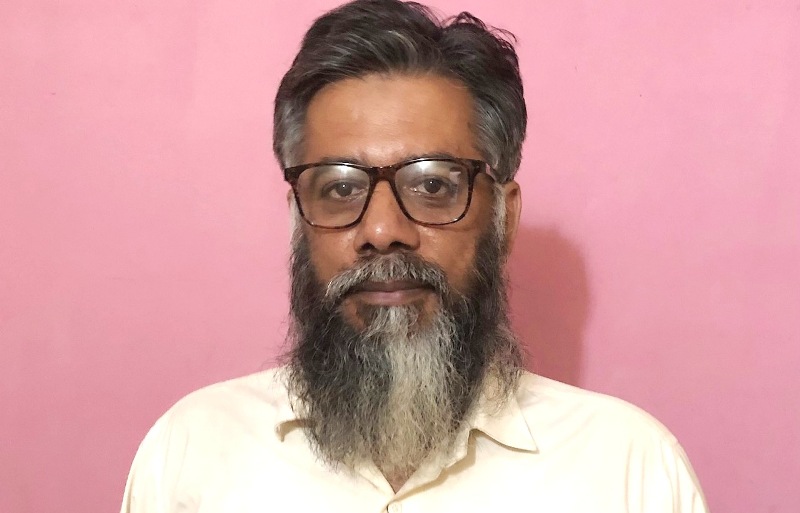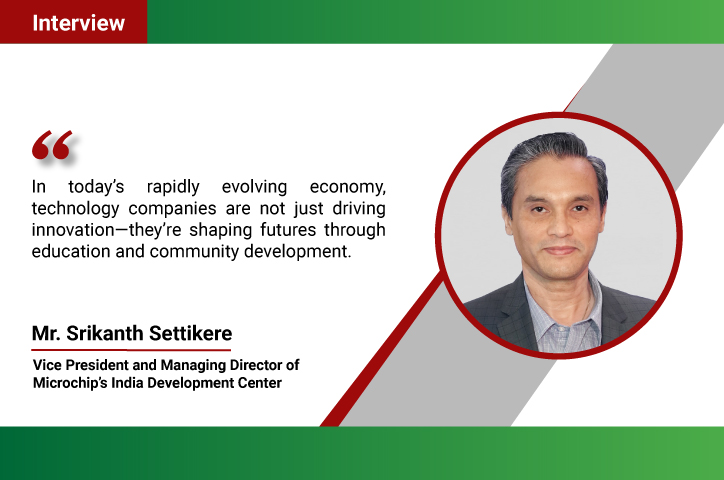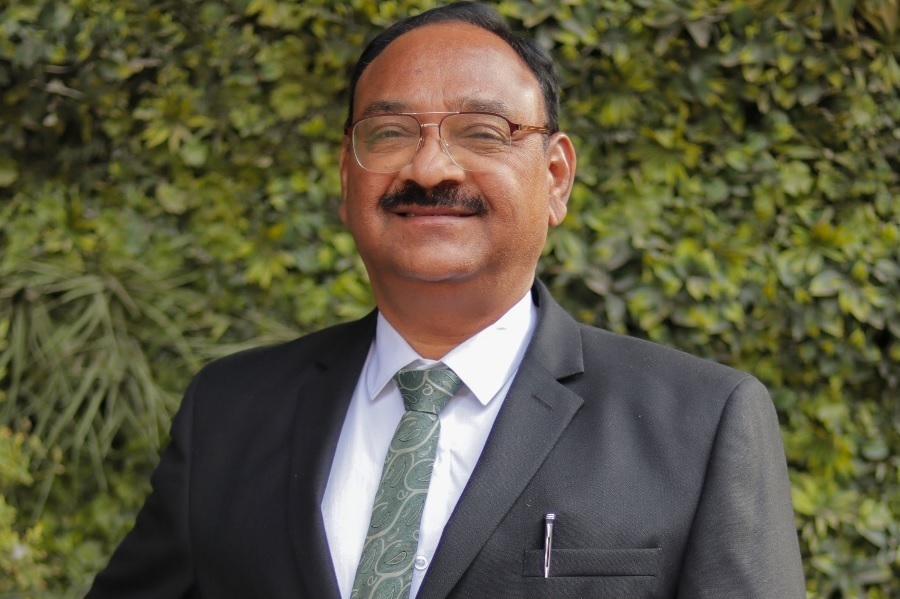On the occasion of World Literacy Day, it is important to reflect on India's literacy landscape within the global context. India, with its vast and diverse population, faces both challenges and opportunities in the realm of literacy. While there have been significant strides in improving literacy rates over the years, a substantial portion of the population, particularly in rural areas, still lacks basic literacy skills. As we observe World Literacy Day today, we invite you to explore the seminal work of Transforming Rural India (TRI) in the realm of education and literacy. TRI's journey since 2017 has been marked by a relentless commitment to uplift the lives of India's most underserved communities through innovative solutions and community-driven strategies.
In this interview with The CSRUniverse, Mr. Javed Siddiqui, Lead, Education at Transform Rural India (TRI), divulges into the guiding principles, key strategies, and impactful initiatives that shape TRI's mission to revolutionize rural education and empower every child with the gift of knowledge.
Scroll down to read the full interview:
Q. On the occasion of World Literacy Day, we would first like you to give an overview of Transforming Rural India’s (TRI) work in the domain of education and literacy- what are the guiding principles and key strategies that shape your work?
A. Since 2017, TRI has been implementing education programs in the poorest parts of India. Our commitment to transforming the lives of the poorest, has led us to design, develop and demonstrate innovative solutions and generate evidence for solving complex problems in the rural education sector. TRI’s interventions are spread across an identified set of Educationally Backward Blocks (EBB). TRI works intensively in these areas through a demonstrated approach of a ‘360o systems-view’. TRI has built a strong platform of knowledge, developed effective tools and process protocols, which intensify the efforts of bringing more children into the learning loop and improving learning outcomes.
The TRI initiative in education is built on the premise of community empowerment and ownership. The fundamental idea behind the program is to strengthen the demand side wherein the community would be empowered to make informed decisions on matters related to children’s education and engage with the school system (supply side) meaningfully so that an eco-system is created within the villages which will lead to a conducive atmosphere of learning for all children. Based on this premise, our engagement focuses on building the capacity of the community institutions and Education Change Vectors (ECVs-Community champions volunteered to take action on social issues-like education), who in turn will engage with the school system to bridge the gap between the school and the community. Our assumption is that a prolonged and sustained dialogue between the teachers and the community would facilitate a shift in the culture of learning, both in school as well as in homes, and eventually lead to better learning outcomes for children. At the end of 5 years, we envision a clear shift in school culture evidenced by improved attendance, a better relationship between parents and teachers, greater involvement of the community in school affairs, increase in the motivation level of teachers and education becoming a pivotal topic of discussion in various community structures and spaces.
Q. While literacy is a well defined, measurable term, education is a much broader aspect. What processes do you have in place to assess the impact of your work in rural education? If possible, could you explain with an example.
A. Literacy is a part of education, but it is not a stand-alone criterion for achieving the results we aim for through TRIs education interventions in rural India. Education, particularly school education, encompasses a much broader spectrum of meanings, as emphasized in the aims of education highlighted in the national curriculum framework(NCF2005). Education goes beyond mere literacy; it comes alive when a learner engages in the authentic act of learning within a structured process, creating their microcosm within the school ecosystem and gaining a profound understanding of the world. This understanding extends to encompass various facets, including our pluralistic society, personal choices, interpersonal skills, self-confidence, basic foundational skills needed for progress in various subject streams, and much more. When we focus solely on literacy, we must recognize that a child's development involves not only grasping the shared meanings of words but also cultivating a sense of shared space, collective experiences of spaces, sounds, symbols, and the co-creation of evolving systems, each with its unique significance. This approach fosters a sense of cohesion within our society, coupled with an appreciation for and sensitivity to diversity.
So, while education may seem like a personal choice, it is, in fact, a part of our collective ethos, guided by collective decisions that our constitution upholds to ensure the right to 'quality' education for every child, regardless of their caste, creed, social background, or geographical origin. TRI envisions an equitable society, where education is considered a public good—a continuous journey of meaning-making rather than just a means to acquire specific traits. Within TRI's result framework, our learning outcomes encompass well-defined areas, including desirable cognitive skills such as observing details, understanding cause-effect relationships, categorizing, drawing upon previous knowledge, asking questions, and the ability to abstract. Additionally, students are encouraged to speak in their own language, respond to both oral and written questions from unfamiliar texts, and express themselves authentically, avoiding mere copying from texts. Collaborative skills, sharing perspectives, and understanding diverse ideas are also integral aspects of these outcomes. These social and personal traits serve as measurement criteria while also forming the foundation for social and constitutional values, which are interwoven into our intervention logic and implementation strategy.
For example, when children gather in learning centers, their performance is not solely assessed based on the number of questions they solve or write. Instead, careful observation extends to how questions are discussed within the group, the collaborative problem-solving process, and the articulation of ideas, all of which are scrutinized attentively. Similarly, when children participate in balsabhas (children's meetings), their various forms of expression, including visual presentations, spoken communication, sharing of thoughts, artistic endeavors, dramatic performances, poetry, imaginative creations, and creativity, all hold significant importance. These multifaceted aspects of education contribute substantially to our mission, as we strive to create an inclusive and equitable society where every child can access quality education and flourish with dignity.
Q. From your experience, what are the key factors that differentiate urban and rural literacy and learning as far as underprivileged sections of the society are concerned?
A. Schools in rural areas serve as a means for acquiring literacy and further knowledge, but they often fail to sustain the interest and attendance of a significant portion of their pupils. This issue is compounded by an urban-centric mindset that tends to view rural areas as passive recipients of aid rather than active participants in their own progress. Consequently, there are frequent misinterpretations of welfare schemes and programs, leading to a disconnect between their intended objectives and their actual impact on the ground. This gap not only affects student engagement but also shapes how individuals are treated, potentially cultivating a culture of victim-hood in rural settings. Preconceived notions about rural students hinder teachers from engaging with them in a manner conducive to effective learning, which necessitates personal involvement, dignity, and mutual respect. Unfortunately, these preconceptions are deeply ingrained in our system, leading individuals from similar rural and social backgrounds to internalize and perpetuate these biases.
Before students even have a chance to develop literacy skills, many drop out due to the need to contribute to family income or support their peers. Some students lose confidence in their ability to learn, often driven away by experiences of cultural alienation and discriminatory teaching methods. Additionally, irregular attendance of both learners and teachers, as well as the absence of support from illiterate or occupationally engaged parents, hinder the necessary interactions and regular engagement required for skill development. Rural students also lack access to urban amenities such as technology, networks, transportation, and exposure to diverse languages, cultures, and learning platforms. Furthermore, prevailing social norms in rural areas often deem it acceptable for children to drop out of school to engage in household work or livelihood activities.To address these challenges, schools in rural areas must receive sufficient resources, functions, and facilities to provide quality education. Breaking down the urban-rural divide in mindset and interactions is essential for building a more equitable and inclusive society where every child can access quality education and thrive with dignity.
Q. How does gender disparity affect literacy rates in the country, and what type of measures does TRI take to address this?
A. A recent survey, the "State of Education in Rural India, DIU2023," reveals a significant shift in rural mindsets. While families facing financial constraints have historically prioritized boys' education due to traditional gender roles assigning girls to domestic duties, this trend is changing. Parents no longer discriminate based on gender, especially concerning primary education. Nevertheless, formidable challenges persist, preventing many deprived girls from accessing schooling. These challenges include early marriages, poor hygiene in schools, insufficient support for girls on special occasions, social pressure for early marriage, and the burden on girls to care for siblings and assist with household chores. Establishing schools as fearlessly inclusive spaces for girls is of paramount importance. TRI actively works toward this goal by providing safe environments for women and girls, including mothers, in both school infrastructure and the academic process, fostering an atmosphere that is non-threatening, non-biased, and non-judgmental. TRI also plays a pivotal role in changing social norms and incorporating a gender perspective into educational planning. Through community engagement and advocacy efforts, TRI raises awareness about the significance of girls' education and challenges traditional gender roles. The organization collaborates with women collectives to strengthen community institutions, aligning them with local needs and promoting social inclusion. Initiatives such as forming "mata samitis," establishing cadres of Education Champion volunteers (Education Change Vectors) in each village, connecting schools with community collectives, and fostering greater gender sensitivity in public spaces, including schools and panchayats, demonstrate the impactful work that TRI has undertaken in recent years.
Q. Given your extensive reach, could you give us an idea on how cultural and economic factors influence attitudes towards education and literacy in different regions of India?
A. I think understanding the true cost that parents bear in educating their children and “how we educate children” across different geographical regions and social strata, requires a region-specific, in-depth study. These variations are more or less influenced by cultural norms, practices, in different regions, social groups, but when it comes to consolidating these factors reveal some similar issues and challenges, such as resource availability in schools, safety concerns, discrimination, and the quality of educational inputs etc. For instance, parents in eastern regions, like West Bengal, Northeast regions, Bihar, and southern parts of India, like Kerala, Pondicherry, Tamil Nadu, tend to be more conscious of "quality" education as a fundamental right. Parents in these regions meet school teachers regularly and teacher absenteeism and child irregularity is quite low here. This trend also varies between rural areas adjacent to urban settings and remote rural villages. People usually spend more on educational expenditure where there are better options, whether is a private school fees or transportation costs. when good public schools are made available or improved due to civil society efforts or government initiatives, as seen in Delhi, parents transitioned their children from private to government schools. Another crucial factor is the medium of instruction. In urban settings and areas where multiple languages are commonly spoken, children benefit from exposure to the language used as the medium of instruction, which helps them remain in school. Conversely, children who lack a print-rich environment at home, support in their social surroundings, or unfamiliarity with the language used in schools, tend to feel alienated and drop out. Economic factors also exert significant influence. In areas with high levels of outward migration, children's regular attendance in school is often compromised. Children engaged in activities like Non-Timber Forest Product (NTFP) collection, generally believed to part of social norms and parents' unawareness, although this is closely tied to their economic status. All of these critical factors warrant thorough examination through a systematic, region-specific study.
Q. Partnerships are essential in development projects. Who are your major partners/supporters and how has collaborating with them helped in elevating the impact of your work in education?
A. TRI envisions transformation through collaborative action where the community is seen as an equal partner in the change process and civil society organisations like NGOs, Govt. Seen as important actors for facilitating process together. TRIcurated this partnership. as a multi-partnered forum, realising that no single civil society organisation has capacity and presence across sectors and geographies to bring envisaged change.It is also important to note that TRI’s approach has been to facilitate partnerships between grassroots level community institutions and resource agencies but, not as a blue print model., bringing organisations, of long experience of working in education to enhance community ownership so, that even when the intervening NGO partners move out of the ecosystem, the community continues its work independently.
The basic premise for TRI is founded on the belief that no single intervention brings lasting change (we must work on all Quality Life Experience dimensions); no one sector - state, market or CSO can fully solve challenges; no one organisation how so ever innovative or impact can bring comprehensive change, therefore, beyond isolated efforts, what is required is collective effort of multiple actors across sectors. TRI attempts to do bring multiple stake-holders together around the community led to holistic comprehensive change agenda.TRI engagement aims to improve the learning levels of students belonging to classes I to V to achieve grade appropriate competencies. TRI Education Partnership has 6 of India’s leading Education Organisations – Eklavya; Samavesh; Vikramshila; Prajayatna; Vidya Bhawan, NEG-FIRE, Aide et Action. These organisations constitute the TRI Education Sector Council, which collectively sets the standards, integrates broad strategy and periodically assesses the progress being made. It is a space for supporting mutual learning, alignment with TRI principles and values, exerting peer influence, support and create joint-action amongst the resource organizations.
Q. Are there any specific cases or success stories that you would like to share with us wherein TRI was able to bring about an on-ground change through their education initiatives?
A. If we talk about the level of improvement in learning outcomes, there are few examples to quote as we didn’t have any field level-impact studies done, but if it about is bringing a change in community ownership in education, there is is significant a change in people aspirations's's and hope that generated through collective action and engagement with an vertical quite abstract and beyond their holds.
Glimpses of progress in Madhya Pradesh
- Rehli 16% schools had recorded 70% increase in attendance.1]
- In Rehli Baseline ( Jul 19) 2.5% of children out of 1521* were able to read simple Hindi text in End line (Feb 2020) it increased to 35% out of 1534*- 32.5% rise recorded in comparison to the baseline
- Around 10% in learning level increased in 5 months support, Thandla
- Improvement in language recorded 20% raised in few indicators it's 30% in just 8 month (Petlavad).
Glimpses of Progress in West Bengal
- On an average 35.4% increase recorded in Maths competency in one field of WB, top raise is of 70% increase from the baseline in 2nd graders final test.
- 12% increase in attendance recorded in just the 2nd year to the program's inception in the Bankura field. It's an overall increase across the year, not just because of any event or in a particular month.
Glimpses of Progress in Jharkhand
- In Raidih, small study of 10 schools recorded an average 12% increase in student attendance
- Teachers' presence in schools increased by 12% in Gola while children attendance increased by 18%.
In a recent study conducted on state of rural primary education by DIU 2023 reveals that TRI created education change vectors (trained women volunteered for educational work in her village) 66% and 68% of village education committee members or SMC members take active parts in school functioning and support. 81% parents and 66% VEC members’ respondents confirmed their participation in SMC meetings. Similarly, in the region where this cadre is present, dimensions of discussions have changed from infrastructure and blaming each other to cooperating for improving attendance, Midday meals and other issues in schools. 84% of respondents confirmed the discussion over quality teaching in parent-teacher meeting. This is an amazing finding which highlights the importance of civil society working with system.Collaboration between change vectors, NGOs, and local communities can significantly impact on educational outcomes. Engaging community leaders, local influences, and volunteers can create awareness about the importance of education and motivate parents to actively support their children’s learning journey.
Q. As per the National Statistical Commission, the surveyed literacy in India was 77.7% in 2017–18. This is still far behind our global peers (e.g. China- 96.8%, Brazil- 94.3%,). While we have reached nearly universal enrollments in basic education, what type of approaches do you think are required to improve literacy in our country?
A. We have clearly and nicely - articulated strategies to fill up the gaps, especially in recently launched national education policy(2020) where national priorities have been set to work on mother tongue based translation of curriculum, incorporation of local context and examples for an alignment of children learning process.
The National Education Policy 2020 (NEP 2020) introduces several noteworthy initiatives aimed at enhancing education in India, with a particular focus on rural areas. One of its key features is the introduction of vocational training starting from class six, aligning education with practical skills development. Additionally, NEP 2020 emphasizes the urgency of Foundational Literacy and Numeracy (FLN) as a fundamental building block for learning, with the potential to reduce dropout rates after primary classes. The government has initiated the NIPUN Bharat scheme, a National Mission on Foundational Literacy and Numeracy, to address this critical issue. Furthermore, NEP 2020 recognizes the significance of early childhood education, underscoring the formative years as crucial for a child's cognitive, emotional, and social development. The policy proposes the establishment of Early Childhood Care and Education (ECCE) centers, catering to children aged 3 to 6, fostering learning through play-based methods to lay a strong foundation for future academic success.
Language plays a pivotal role in learning, and NEP 2020 promotes mother tongue-based educational instruction up to grade 5, recognizing its importance in enhancing listening, speaking, reading, and writing skills. Research supports the idea that students comprehend concepts better and develop stronger cognitive abilities when taught in their mother tongue. This multilingual approach in elementary education not only preserves linguistic diversity but also improves learning outcomes, retention rates, and overall academic success.In this transforming education landscape, organizations like the Transform Rural India Foundation have a significant role to play. They can contribute to realizing NEP 2020's vision by focusing on infrastructure development, technology integration, teacher capacity building, curriculum development, community engagement, skill development, and research. Together, these efforts can create an inclusive and empowering education system in rural India, positively impacting the lives of millions of children and fostering sustainable development in rural communities.
Q. What is your take on the efforts and progress that India has made towards improving literacy rates in the past decade? Also, what are the most critical issues that need to be addressed by policymakers on an urgent basis to improve the quality of rural education?
A. In the past decade, India has made commendable efforts to boost education statue its impact is quite visible particularly in rural areas. Initiatives like the Right to Education Act(2009), Sarva Shiksha Abhiyan(2001), and digital literacy programs have significantly increased school enrollment and access to education. But more importantly, the programs, like Mid-Day Meal Schemes, cycles for girl students and improving functions in schools has played a pivotal role in improving attendance by providing nutritious meals and facilities like drinking water, toilets and sports to all students. The recent National Education Policy (NEP) 2020 has set ambitious goals for revamping the education system, emphasizing foundational literacy and numeracy, vocational training, and a flexible approach to learning. However, despite these strides, several pressing issues need urgent attention from policymakers to enhance the quality of rural education.
The most critical challenges include improving the overall quality of education, investing in teacher training and their professional development, addressing infrastructure deficiencies, bridging the digital divide, fostering community engagement, promoting girls' education, expanding early childhood education programs, adopting multilingual education approaches, implementing robust monitoring and evaluation systems, and ensuring an adequate supply of qualified teachers in rural areas. These efforts are vital to providing meaningful and effective education, reducing gender disparities, and nurturing the development of the country's youth in rural communities, ultimately contributing to India's overall progress and development.
Q. How can businesses collaborate with local schools, educational institutions and other social stakeholders to improve literacy rates?
A. In the pursuit of enhancing the quality of school education in rural India, the National Education Policy (NEP) 2020 has laid out a comprehensive framework. One of its key pillars is the integration of technology to enrich children's learning experiences and bridge the digital divide, particularly in rural areas. The NEP encourages businesses to play a pivotal role in achieving these goals. Companies can collaborate with educational institutions and other social stakeholders to drive impactful change. Firstly, businesses can provide flexible funding for critical aspects such as research, development, training, and the scaling up of educational initiatives. By contributing to the creation and implementation of technology-driven learning solutions, businesses can help ensure that children in rural areas have access to high-quality educational resources.
Beyond technology, businesses can support continuous professional development for teachers, emphasizing pedagogical content knowledge and technological skills. Well-trained educators are essential for improving the overall quality of education. Additionally, businesses can offer financial support to civil society organisations dedicated to holistic education improvements in rural areas. These organizations play a crucial role in creating inclusive and child-friendly learning environments by investing in infrastructure, establishing school-community libraries, and supporting teacher professional development. Furthermore, public-private partnerships can be explored to effectively implement literacy improvement programs, with organizations like TRI strengthening community processes and enhancing parental capacity to support educational initiatives. Adopt-a-Block programs can empower businesses to take responsibility for specific rural areas, providing resources, conducting regular follow-ups, and facilitating the scaling up of successful educational efforts. Investment in school infrastructure, particularly for girls, is imperative to boost regular attendance. Collaborative research with educational institutions can identify region-specific challenges and effective teaching methods, while digital literacy initiatives can empower rural youth with the skills needed in the 21st century. The establishment and enhancement of school and community libraries, coupled with village-level campaigns, can further promote literacy in rural India. By embracing these multifaceted approaches and collaborations, businesses can make significant contributions to improving literacy and the quality of education in rural India, ultimately shaping a brighter future for the nation's youth.
Q. In light of rural India's changing landscape, how do you see TRI’s approach evolving to strengthen literacy and education in our villages?
A. As rural India undergoes trans-formative changes, Transform Rural India (TRI) is adapting its approach to strengthen primary education, not just on literacy but on education as tool for people's aspirations and dreams in life. TRI recognizes the paramount importance of community collaboration in school functioning. Our approach involves actively engaging with local communities, parents, and stakeholders to create a sense of ownership and responsibility for the education of their children. By fostering strong partnerships with village-level institutions, TRI aims to empower communities to actively participate in decision-making processes, school management, and ensure a conducive learning environment. This community-driven approach not only enhances the accountability of schools but also promotes the holistic development of students by aligning educational objectives with the aspirations and needs of the local population.
Furthermore, TRI is committed to making learning a joyful and interactive experience in rural villages. We understand that the integration of technology can significantly enhance the quality of education in these areas. As part of our evolving approach, we are leveraging technological platforms to create innovative learning solutions tailored to the specific needs and contexts of rural students. These platforms provide access to high-quality educational resources and tools that can bridge the digital divide. By incorporating interactive and engaging digital content, we aim to make learning more enjoyable for students, encouraging them to actively participate in the educational process. TRI's evolving approach combines community collaboration with the integration of technology, creating vibrant and effective learning spaces in rural villages that empower students with the knowledge and skills needed for a brighter future.
















.jpg)




